- sales/support
Google Chat: zj734465502@gmail.com
- sales
+86-0755-88291180
- sales01
sales@spotpear.com
- sales02
dragon_manager@163.com
- support
tech-support@spotpear.com
- CEO-Complaints
zhoujie@spotpear.com
- sales/support
WhatsApp:13246739196
7inch-DSI-LCD-H User Guide
Features
- 7inch DSI touch screen, ten-point capacitive touch control
- IPS display panel with hardware resolution of 1280×720
- Toughened glass capacitive touch panel, hardness up to 6H
- Optical bonding toughened glass panel, clearer picture quality
- Using AF anti-fingerprint process, not easy to get fingerprints and easy to clean
- Support Pi5/CM5/4B/CM4/3B+/3A+/3B/CM3+/CM3
- Directly drive the LCD by the DSI interface on the Raspberry Pi, with up to 60Hz refreshing rate
- When used with Raspberry Pi, it supports Bookworm/Bullseye/Buster systems
- Supports software control of backlight brightness
Electrical Specifications
| Parameters | Minimum Value | Standard Value | Maximum Value | Unit | Note |
| Input voltage | 4.75 | 5.00 | 5.30 | V | Note 1 |
| Input current | - | 0.5 | TBD | A | Note 2 |
| Operating temperature | 0 | 25 | 60 | ℃ | Note 3 |
| Storage temperature | -10 | 25 | 70 | ℃ | Note 3 |
•Note 1: Input voltages exceeding the maximum or improper operation may cause permanent damage to the device.
•Note 2: The input current needs to be ≥ 0.5A, otherwise it will cause the startup failure or display abnormality, and staying in an abnormal state for a long time may cause permanent damage to the device.
•Note 3: Please do not store the display panel in a high-temperature and high-humidity environment for a long time. The display panel should operate within its limits, otherwise it may be damaged.
Interfaces

Hardware Connection
Pi5 Hardware Connection
1. Use the "FFC Cable 22PIN 200mm (opposite direction)" to connect the DSI port of the display to the 22PIN DSI port of the Raspberry Pi motherboard. 2. Use the "GPIO cable" to connect the power connector of the display to the 5V GND pin header of the Raspberry Pi motherboard. 3. Secure the Raspberry Pi to the display with M2.5 screws.
The installation effect is as follows:
Note: Make sure that the DSI cable is connected in correct direction and 5V power is supplied through the GPIO pins.
Pi4B/3B+/3B/3A+ Hardware Connection
1. Use the "DSI-Cable-12cm" cable to connect the DSI port of the display to the 15PIN DSI port of the Raspberry Pi motherboard. 2. Use the "GPIO cable" to connect the power connector of the display to the 5V GND pin header of the Raspberry Pi motherboard. 3. Secure the Raspberry Pi to the display with M2.5 screws.
The installation effect is as follows: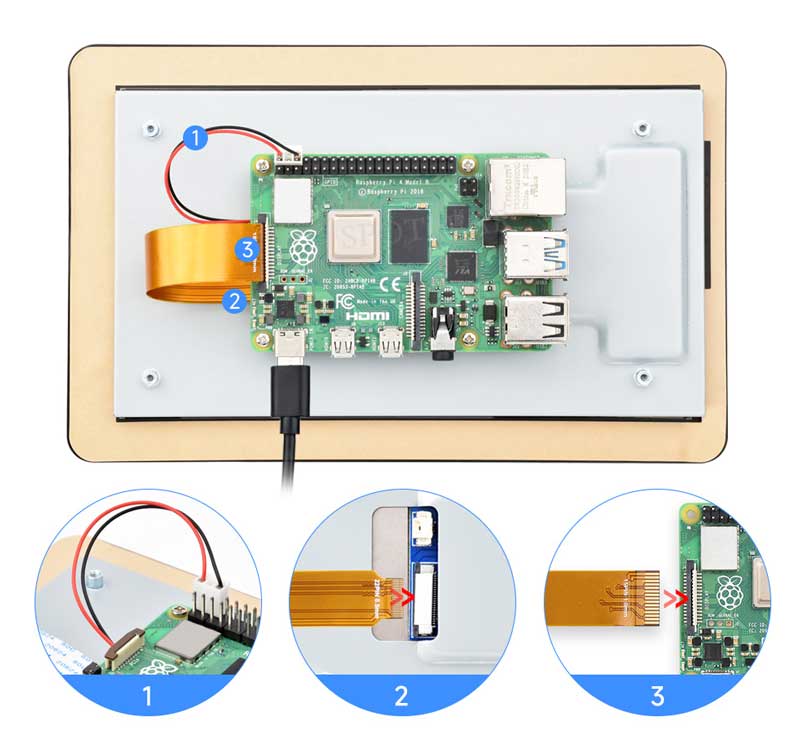
Note: Make sure that the DSI cable is connected in correct direction and 5V power is supplied through the GPIO pins.
Software Settings
For Bookworm and Bullseye System
1. Connect the TF card to the PC, download and use Raspberry Pi Imager to flash the corresponding system image.
2. After the burning is completed, connect the TF card to the Raspberry Pi, start the Raspberry Pi, and log in to the terminal of the Raspberry Pi (you can connect the Raspberry Pi to the HDMI display or use ssh to log in remotely).
3. Run the following command on the terminal to install the driver:
#Step 1: Download and enter the Waveshare-DSI-LCD driver folder git clone https://github.com/waveshare/Waveshare-DSI-LCD cd Waveshare-DSI-LCD
#Step 2: Enter uname -a on the terminal to view the kernel version, and cd it to the corresponding file directory #6.6.51 then run the following command cd 6.6.51
#Step 3: Please determine the bits of the current system you are using. For a 32-bit system, proceed to the 32 directory, and for a 64-bit system, proceed to the 64 directory cd 64 #cd 32
#Step 4: Enter your corresponding model command to install the driver, pay attention to the selection of the I2C dip switches #7inch DSI LCD(H) 1280×720 Driver: sudo bash ./WS_xinchDSI_MAIN.sh 70H I2C0
#Step 5: Wait for a few seconds, when the driver installation is complete and no error is displayed, restart and load the DSI driver to use it normally sudo reboot #Note: The steps above require that the Raspberry Pi can connect to the internet normally
5. Wait for the system to reboot, it will be able to display and touch normally.
Bookworm Touch Screen Rotation
- 1. Open the Screen Configuration application;
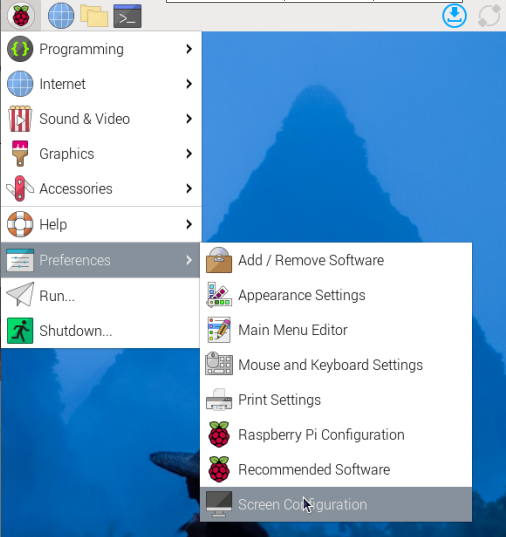
- 2. Go to Screen - > DSI-1 - > Touchscreen and check 10-0014 Goodix Capacitive TouchScreen;

- 3.Click Apply, then close the current window, and reboot according to the pop-up prompts to complete the specified touch screen;
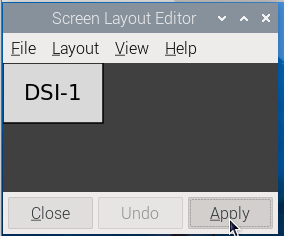
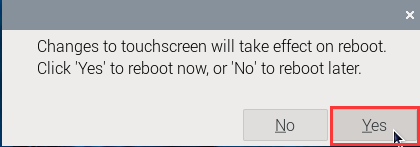
- 4.Go to Screen > DSI-1 - - > Orientation, check the direction you need to rotate, and finally click Apply to complete the display and touch synchronous rotation.
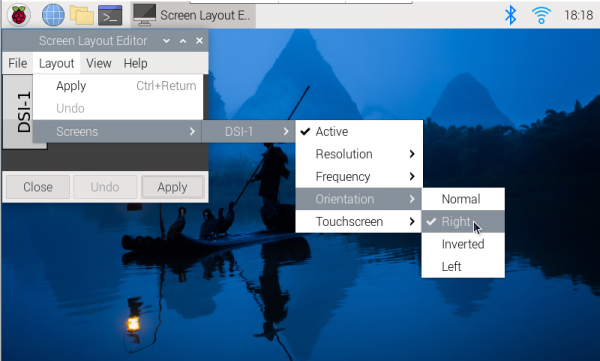
Note: Only the Bookworm system supports the above synchronization rotation method. For the Bullseye and Butser systems, manual separate settings for touch rotation are required after displaying the rotation.
Bullseye/Buster Display Rotation
- 1. Open the "Screen Configuration" application;
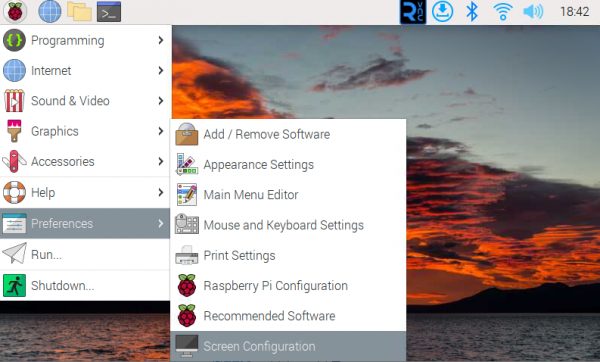
- 2. Go to Screen > DS-1 - - > Orientation, check the direction you need to rotate, and finally click Apply to complete the display rotation.
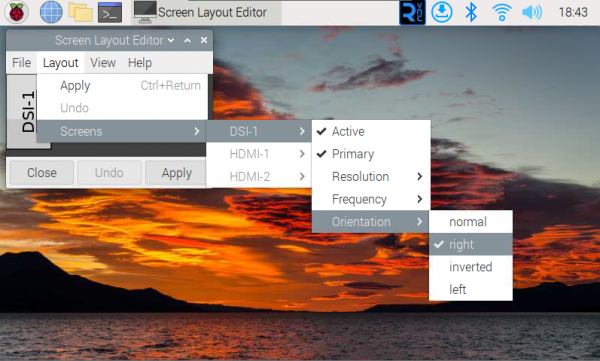
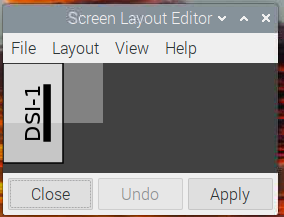
Bullseye/Buster Touch Rotation
sudo nano /boot/config.txt # The command to modify the touch rotation angle at the end of the config.txt file will take effect after restarting (the command with 0° touch direction exists by default) #0°: dtoverlay=WS_xinchDSI_Touch,invertedx,swappedxy #90°: dtoverlay=WS_xinchDSI_Touch,invertedx,invertedy #180°: dtoverlay=WS_xinchDSI_Touch,invertedy,swappedxy #270°: dtoverlay=WS_xinchDSI_Touch
lite Version Display Rotation
sudo nano /boot/cmdline.txt #Add a command to display the rotation angle at the beginning of the cmdline.txt file, and save it to take effect after restarting #Display rotation 90 degrees video=DSI-1:1280x800M@60,rotate=90 #Display rotation 180 degrees video=DSI-1:1280x800M@60,rotate=180 #Display rotation 270 degrees video=DSI-1:1280x800M@60,rotate=270
Screen Sleep
Run the following command on the Raspberry Pi terminal and the screen will go to sleep:
xset dpms force off
Disable Touch
At the end of the config.txt file, add the following command corresponding to disabling touch (the config file is located in the root directory of the TF card, which can also be accessed by the command: sudo nano /boot/config.txt):
disable_touchscreen=1
Note: After adding a command, it needs to be restarted to take effect.
Resources
2D Diagrams
FAQ
Question: How to replace Raspberry Pi boot logo image?
Replace the image in the directory (/usr/share/plymouth/themes/pix/splash.png) with your customized image
Support
Monday-Friday (9:30-6:30) Saturday (9:30-5:30)
Email: services01@spotpear.com




